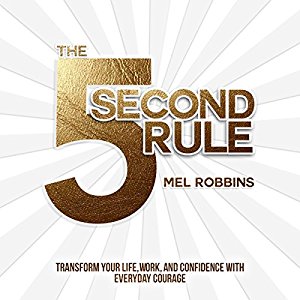

What's New

Words of Wisdom
52
cards and 15 activities to spark conversations and make sense of learning.
Learn more HERE.
What We Do
The Firefly Group helps people make sense of what they learn and experience.
Whether facilitating a group for better decision-making, keynoting a conference, leading a training, or writing an instructional design, we use novel methods that engage, spark creativity, and produce memorable results.
 If
this sounds like a good direction for your organization, let's talk about
how we might collaborate! Please give me a call (802.257.7247) or send an
. - Brian
If
this sounds like a good direction for your organization, let's talk about
how we might collaborate! Please give me a call (802.257.7247) or send an
. - Brian
 Your ETR (Estimated Time to Read): 10 minutes Your ETII (Estimated Time to Implement Ideas): 5 weeks |
What
can you teach with a eight washers tethered to a string?
Watch my video in the Activity below and find out!
May
2017
|
Say
It Quick |
Discoveries bits of serendipity to inspire and motivate |
Ideas fuel for your own continuous learning |
Activities tips and tricks you can try today |
|
Insecurity - Courage comes from within |
The 5 Second Rule - Countdown and get into action |
A 5 Second Hammer - Don't forget other ways to find courage |
The Power of One - A surprising phenomena to demonstrate the 5 Second Rule |
How can we overcome the inertia of procrastination, fear, uncertainty, and low confidence? In her new book, Mel Robbins says it's a matter of finding our courage. Learn more about her simple technique and the role of inner resources in this issue of the Firefly News Flash beginning with a 99-Word Story on a high ropes course and ending with a 2 minute video that demonstrates the power of one.
Insecurity
At the University of New Hampshire outdoor adventure learning center, I found myself immobilized on the high ropes course. Attached to a safety harness dangling 25 feet above ground, I was balanced on a tightrope trying to reach the next handhold that would enable me to cross the gap and overcome the obstacle. But it was too far. I simply couldn't reach it without releasing my other hand.Then, from far below, I heard the simple, calm reassurance of the woman spotting me, "Trust yourself."
That's when I found my courage and let go of fear and uncertainty.
 The
Five Second Rule
The
Five Second Rule
Mel Robbins promises to change your life in five seconds.
How? "The moment you have an instinct to act on a goal you must count down 5-4-3-2-1 and physically move or your brain will stop you," she says.
Of course, you will find yourself running that countdown many times during each day as you use Robbins' rule to stop procrastinating, start projects, get back on track, or change your attitude.
In her book, The 5 Second Rule, Robbins explains that the act of counting sidetracks your brain from counteracting your intentions. It is harder to talk yourself out of doing something if your mind is busy with a math problem.
Counting from 5 to 1 is like being an astronaut readying for blastoff. It sets up an expectation to move into action. But when you hesitate, you give your mind a chance to overthink and soon you have convinced yourself to stay comfortable or to play it safe. Hesitation opens the possibility for your consciousness to consider the potential risks; that maybe you should wait for a better time.
Robbins maintains that it takes courage to overcome our daily moments of hesitation and the 5 Second Rule is a way to kick start the pluck you need. Similar to the 99-Word Story, with a simple reminder, we are able to rise to the occasion and step forward boldly with confidence.
The 5 Second Rule is a good strategy to break procrastination or to take an initial step in an action you just don't feel like doing. Count from five to one then move your body. Once in motion, you are more likely to take the next step, and the next, and keep moving.
It also works well when you have an impulse to act but are hesitant to break a social rule, intrude on someone's privacy, or look foolish. If you have ever been fearful of sharing your opinion or crossing the room to meet someone, run the countdown in your mind and by the time you reach zero you'll be ready to take the risk.
Unfortunately, the book reads like an infomercial. Having sprinkled her writing with texts and tweets from fans, Robbins seems overly anxious to convince us that the 5 Second Rule is a credible solution for any and every problem. I quickly grew tired of reading the gushing words of Mel's fans - especially since most looked like screen shots from a smart phone and were barely legible on my e-reader.
I also became annoyed by how many times Robbins referenced her own rule as "#5SecondRule". Yes, I understand that you'd like to collect even more tweets about your own book, Mel. But I don't need a reminder on every page.
The 5 Second Rule is a simple concept and, though it has apparently been helpful for many people, its lack of complexity doesn't justify a whole book. My guess is that you could save time and money by watching Mel's TED Talk but I can't say for sure since I haven't seen it myself. I've already run the 5 Second Rule and am off to my next project.
More Information:
The 5 Second Rule: Transform Your life, Work, and Confidence with Everyday Courage by Mel Robbins, Savio Republic © 2017, ISBN: 978-1-68261-238-5
 A
5 Second Hammer
A
5 Second Hammer
The most interesting part of Robbins' book was the connection she made to
brain science. Unfortunately, science was told to sit out for most of the
book and not asked to come out and play until chapter twelve.
There Mel explains that the act of counting helps prevent our animal brain from over shadowing our executive functions and that anxiety and excitement produce the same autonomic responses (increased adrenaline and a racing heart rate).
With her five-second countdown hammer, Robbins finds lots of nails to clobber. She happily applies her rule to dealing with worry, anxiety, and fear. Though she briefly describes some simple strategies for countering these emotions, it's not clear that the 5 Second Rule is really necessary.
For example, when you are worried, it's helpful to find something that you are grateful for in that moment. Doing this provides a positive counterbalance to the negativity you are feeling. But you don't need to count from five to one to decide to be grateful. You can simply identify something that you appreciate.
Similarly, Robbins explains that you can use the psychological technique of reframing to deal with anxiety. When you are about to speak in public, for example, you can reframe your nervousness, elevated heart rate, and adrenaline as an indication of your excitement to be able to share your knowledge with such a crowd. But, again, you don't need a five second countdown to do this sort of reframing.
Or for fear, many therapists suggest visualizing the positive result you'd like to see in spite of your doubts. But injecting the 5 Second Rule into this strategy is unnecessary. Inventing a positive result is a matter of creativity not a problem of willingness, motivation, or procrastination.
In fact, since a five second countdown tends to distract your analytical brain, it could prevent you from using these techniques for countering worry, anxiety, and fear. If you've already counted 5-4-3-2-1 and jumped into action, it's too late to visualize a new result or to reframe the situation.
It's fine to use the 5 Second Rule to get off the dime but, as in the 99-Word Story, you need to be tethered to other supports, strategies, and techniques if you want to fully tap into your inner strength.
The Power
of One
This activity is intended to provide a visual and kinesthetic analogy that
demonstrates the potential behind using the 5 Second Rule as described by
Mel Robbins. You can see a demonstration of the effect by clicking the video
below or THIS LINK.
You can also download a PDF of the activity for your own use HERE
and when you do, please
what happened when you used it with your group.
The Power of One
Goal: to describe the main idea behind the 5 Second Rule
Materials:
- String
- 8 Large Washers
Procedure:
Prepare a length of string about 15 inches long with 7 large metal washers tied in a loop at one end and another washer of the same size tied to the opposite end. Hold it up in front of the group and, in your own words, describe the string and washer contraption while explaining that you'd like to share an experiment that will help the group think about the power of the 5 Second Rule.Hold the single washer between your thumb and index finger of one hand and drape the 7 washers over the index finger of your other hand. Move the single washer left and right horizontally (parallel to the floor) to demonstrate that the end with the heavy set of washers moves up and down perpendicular to the travel of the single washer.
Pull the single washer farthest from your index finger so the 7 washers are dangling right below your finger. Keep the single washer horizontal and parallel to the floor. Now ask the participants to predict what will happen when you let go of the single washer. Most will expect that the string of washers will fall to the floor. Don't respond to any answers; simply let the group share their ideas.
Warn participants to watch closely because things will happen quickly when you let go of the single washer. Ask the group to count down from five to one and release the washer at zero.
Instead of landing on the floor, the group of seven washers will drop several inches but then the single washer will wrap itself around your index finger and prevent the whole string from falling any further. Repeat the demonstration if necessary. Invite people to offer explanations for why the washers don't fall to the ground. After hearing a few explanations, you can share that, as the single washer begins to fall, it speeds up and gains enough momentum to wrap around your finger.
Tell people that this is similar to how the 5 Second Rule works. You may be hesitant about doing something or fearful that you will fail, just like we didn't want the cluster of washers to fall to the floor. When we count down from five to one, we build our inner commitment to action. When we hit zero and take that action - releasing the single washer - our courage kicks in, helps us gain momentum, and propels us to a new, unexpected result.
If you wish, distribute strings and washers to everyone and let them replicate your experiment.
Discussion:
- What are the sort of simple every-day decisions that might be difficult for us to make?
- What are some reasons it might be difficult to make these decisions?
- When would it be most helpful to use the 5 Second Rule?
- What insights does this experiment give you about facing fears or taking action?
- What recommendations do you have for using the 5 Second Rule?
Should you need it, here a more scientific explanation of why the single washer is able to suspend the seven:
The single washer is acting like a pendulum. The shorter a pendulum is, the faster it swings. When the washer is released, the weight of the 7 washers pulls the single one so rapidly and its pendulum is shortened so quickly that it gains enough momentum to be propelled around the index finger.
|
Whether you need a keynote speaker, or help with strategic planning, performance improvement, or training facilitators and trainers in your organization, I look forward to your call (802.380.4360) or . -- Brian |
Read previous
issues. Click Library!
To add or delete your name to our mailing list, email
with a short note in the subject line.
I want this newsletter to be practical, succinct, and thoughtful. If you have suggestions about how I can meet these criteria, please let me know! Send me an with your thoughts and ideas.
Home
| Services | Products
| Mission | Ideas
| The Group | The
Buzz
(c)
2017 The Firefly Group